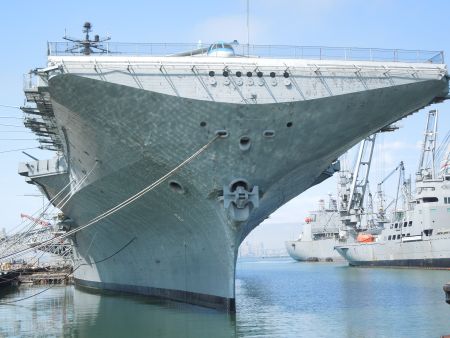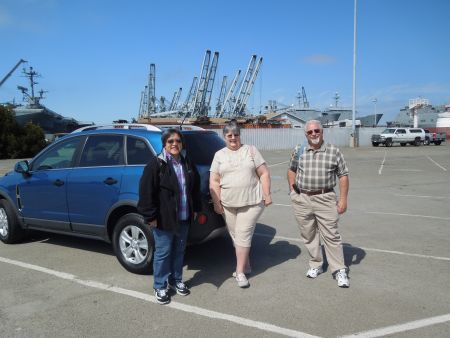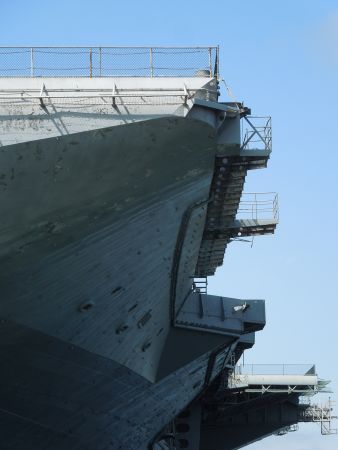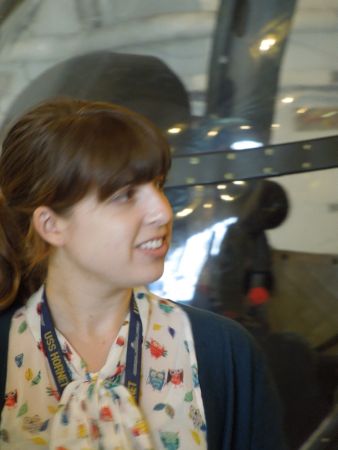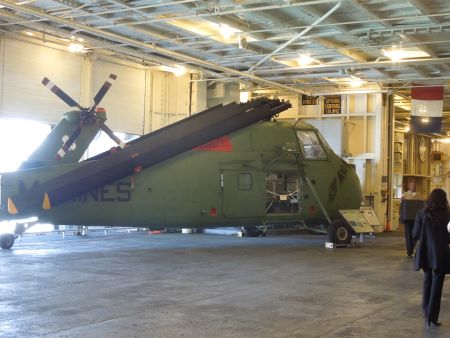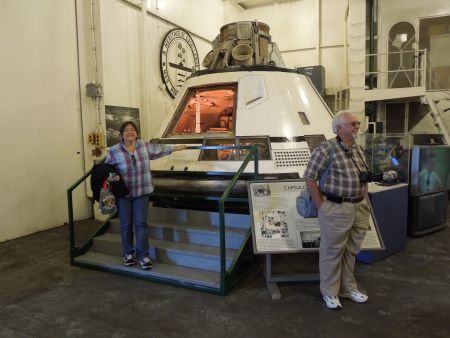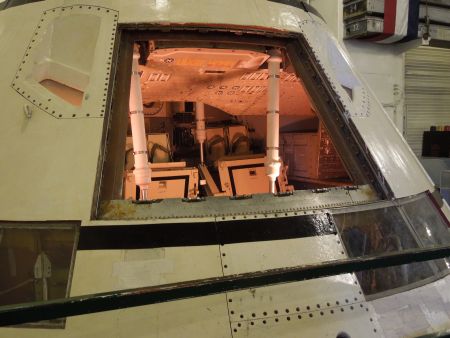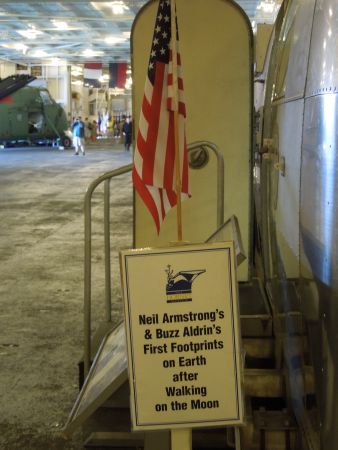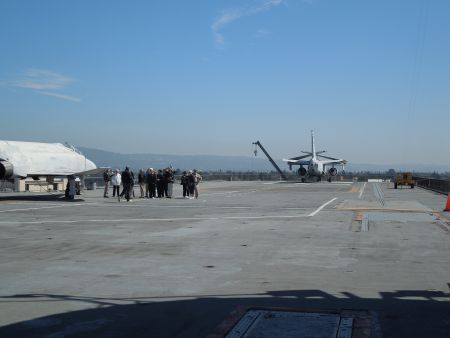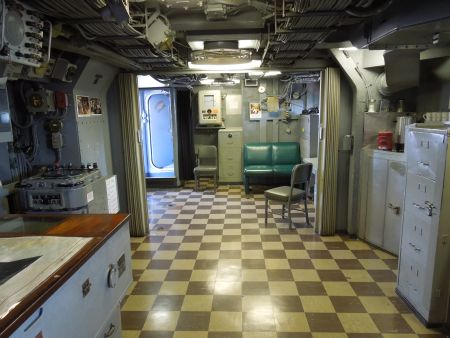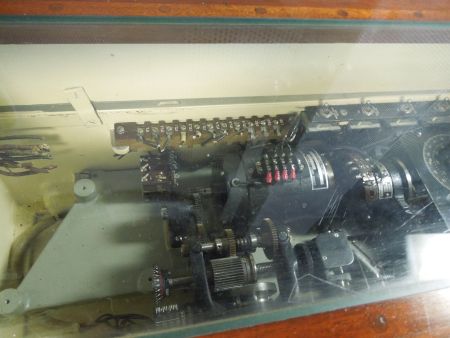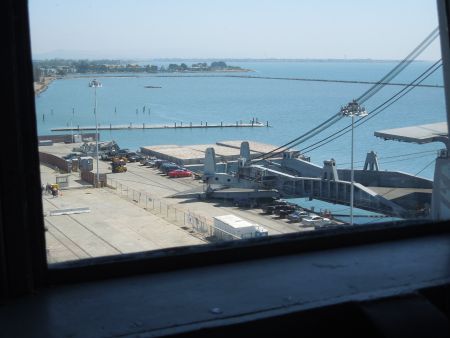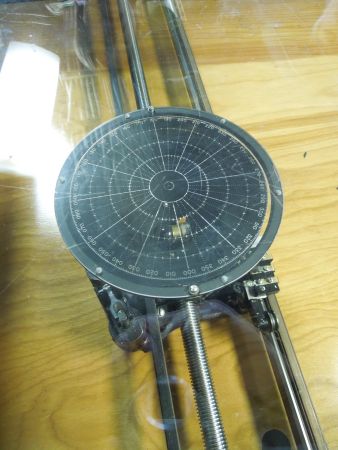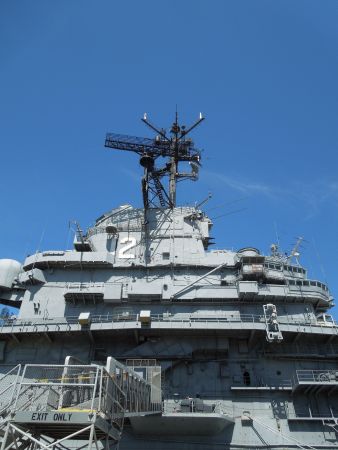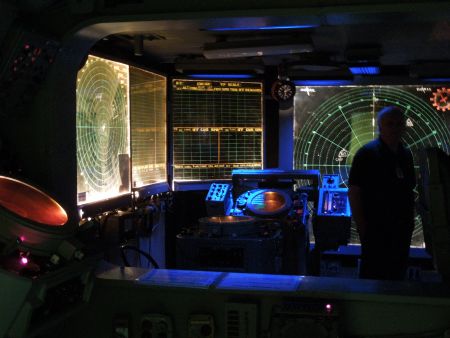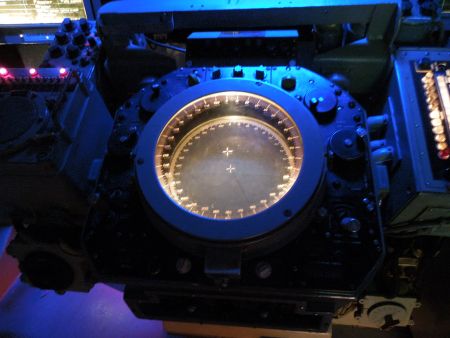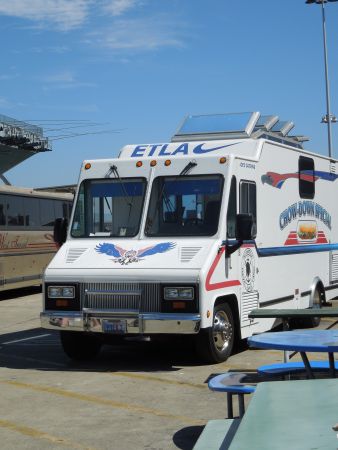The Hornet is an Essex-class aircraft carrier. It was commissioned in 1942 and afloat in 1943. The Hornet played important roles in history, during world war II and later, in the 1960s, as the recovery ship for the Apollo capsules. Now it’s a museum, docked at the Alameda Naval Base.
Alameda is a diverse and interesting town, but my impression of it from this trip was of a tangled puzzle of freeway off-ramps. Once we went through the Webster Street tube the town shook itself out into a traditional grid, and the directions to the naval base were clear.
Greg drove, which was a gift. In the late 1960s, Greg was in the Reserve Officers Training Corps (ROTC) and his at-sea training was on the Hornet. During his term, the Hornet picked up the Apollo test capsule off Wake Island.
Greg told us Hornet stories as we drove down. Lots of NASA folks were on-board when he was, and while he was required to serve a shift in nearly each division of the ship, many of the officers just signed off the ROTCers’ papers and sent then away. My favorite story was one night when he had night shift and went somewhere (I don’t remember exactly where). The officer said, basically, “There, that’s an engine; here, I’m signing your book, now get out of here.” He and his fellows had the rest of the night shift to themselves. One of the ship regulars took them out alone one of the catwalks, all the way to the bow of the ship, where they sat and talked and watched the sun come up.
This was that catwalk.
Hangar Deck
Our docent was Laura Fies. Laura is the daughter of my friend Karen and the award-winning graphic novelist Brian Fies. Laura is a talented artist and writer in her own right, and is finishing up schooling to become a museum curator. She has been working on the Hornet for more than two years. Laura knows the ins and outs of the ship, and the ups and downs… and there were a lot of ups and downs.
When we got there, there was a military ceremony happening in Hangar Bay One and a Hornet Museum reunion in Hangar Bag Three. In between, we stopped to look at the Apollo exhibit, and study this helicopter, which is one of the areas where people who visit the Hornet think they have seen a ghost. A pilot climbs out of this copter, removes his helmet, and dissipates.
All four of us are old enough to remember a time before people walked on the moon; and all four of us remember watching the lunar landing, so the sign, above, is part of living history. It gave me a shiver when I read it.
The Hornet flight deck is 900 feet long. That’s three football fields, end to end. The ship has three working elevators that transport the planes.
The Islands
Laura took us on the “islands” tour, showing us navigation bridge, the chart room, the captain’s bridge and the captains at-sea quarters (not cushy!) and the admiral’s at-sea quarters.
That’s Lillian in the captain’s chair. (She’s the most adventurous of us.)
The Ded Reckoning Tracer (DRT) was like “GSP without the S,” Laura told us.
The circular plate below rests underneath a glass plate. When the computer identified your location, you carefully spread your charts over the glass, and a laser light popped up to identify your destination. In a time when people in rural areas of the US didn’t have running water or electricity, this tech was pretty amazing.
And here is the view from the captain’s bridge looking south.
CIC:
This was a cool area, not only for how it looked (this is how it looked) but what it was used for; this is the intelligence room, tracking, as Laura said, “What was on the water, what was under the water, and what was above the water in the air.” For a pre-internet, pre-wireless, pre-video-graphics time period, this old-school tech worked pretty well.
The low light in this area is not for dramatic effect. These screens were backlit so the grease pencils would show up better. This lighting is what it would have been like when the ship was operational.
Lunch
Laura recommended the food truck for lunch. The menu was simple, with fresh ingredients, good. We were joined at our picnic table by a flock of – well, I won’t say “aggressive,” perhaps, “supremely self-confident” – pigeons. Laura said two of the birds are each missing one leg, and the ship has named them Bonnie and Clyde.
Then we went back to see the rest of the ship.
(To be continued.)

